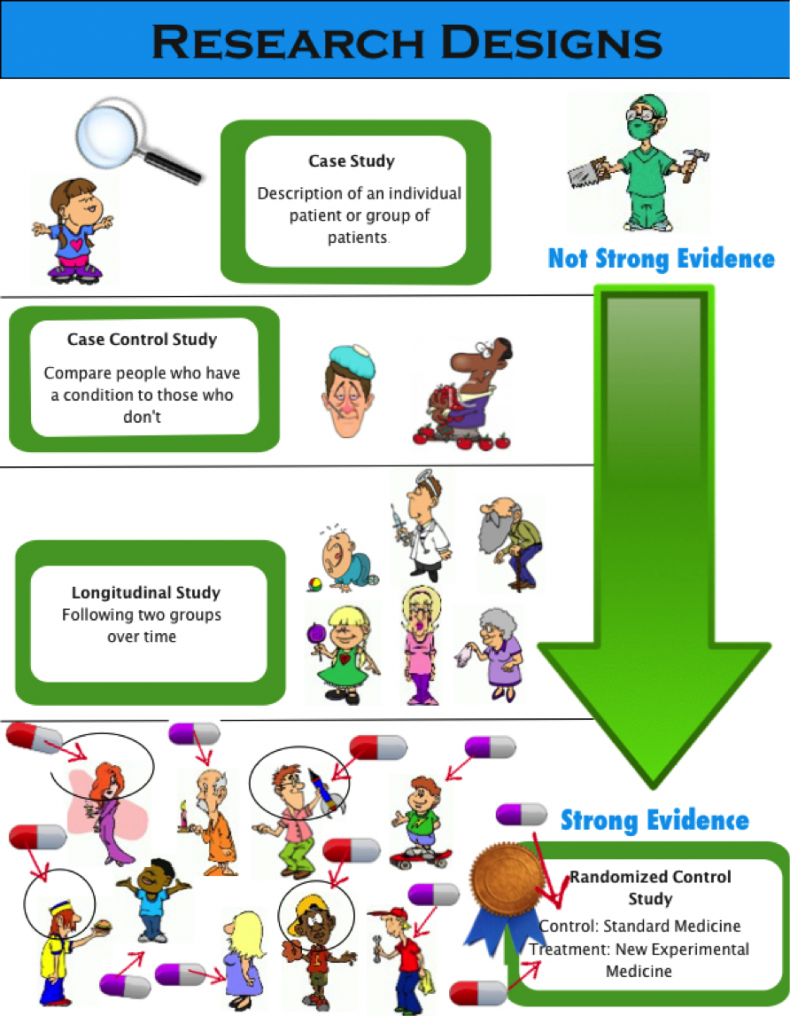OR: What the heck does this mean and why should I care?
As you do your own “research” to find information you care about, you’ll stumble upon several types of scientific or medical research designs out there. And there are big differences in what can be learned from them.
Here are some of the most common types of research you’ll see:
Case Studies or Case Reports are descriptions of the treatment of an individual patient or group of patients. These are usually descriptions of the care of patients that have unusual conditions or patients who have received different or new treatments. Although case studies are the easiest to understand, they are only useful to learn about a diagnosis or treatment. If researchers are trying to find strong evidence to support some scientific hypothesis, case studies are not very useful because they are just descriptions of a limited number of cases.
Case Control Studies are often used to identify factors that may contribute to a medical condition by comparing subjects who have a condition with subjects who do not (but are otherwise similar). An example would be comparing the amount of roughage in the diet of those who have colon cancer with those who haven’t got colon cancer. These studies can only describe an “association.” They cannot say that doing one thing caused another to happen. These studies are not as powerful as randomized control studies.
A Longitudinal Study observes a group of people over a long period of time, mainly to track the effect of some factor. For example, when trying to discover the causes of criminality, a researcher may track 50 children over a 30-year period in order to find a common factor among those who have become criminals. The Framingham study is a famous longitudinal study.
A Cohort Study is a type of longitudinal study in which a group of people who share a common characteristic or exposure (such as being exposed to a drug, or having undergone a certain medical procedure) are followed for a defined period.
Randomized Control Studies are the “gold standard” in medical research. In this type of study, there are two groups, one a treatment group and the other a control group. The control group receives a placebo or the standard treatment, while the treatment group gets the new (or experimental) medicine or new treatment. Patients are randomly assigned to each group. These are the studies that provide the best evidence. They are best for answering questions on effectiveness of interventions or treatments.
Feel free to use the comments below to ask questions about these and other types of scientific or medical research.







Thank you: a very good illustration and picture well explaining usual but difficult medical research words!
Thank you so much Pina.
Title: When is a case-control study not a case-control study?
Author: Mayo NE; Goldberg MS
Journal: J Rehabil Med; 2009 Mar; 41(4):209-16. PubMed ID: 19247538
Title: When is a case-control study a case-control study?
Author: Mayo NE; Goldberg MS
Journal: J Rehabil Med; 2009 Mar; 41(4):217-22. PubMed ID: 19247539